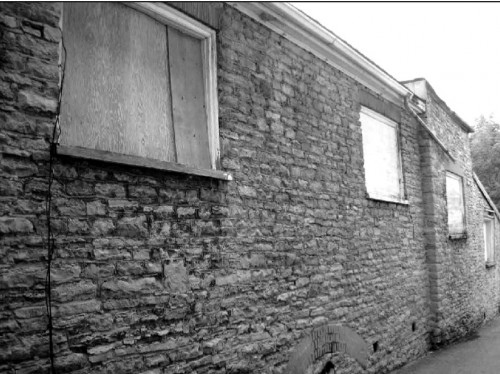County News
Flawed process

 Building owners bewildered by council decision-making
Building owners bewildered by council decision-making
Rosemary and Vic Smith say plans to demolish and renovate the vacant stone building at the rear of the Allison Block building are at a standstill after council agreed to allow the proposed demolition—but only if they retain the north and east walls. The Smiths say it will simply cost too much to try and retain walls and incorporate them into a renovation.
Rosemary Smith is disappointed with the outcome— but even more disappointed by a process she believes is out of touch and unresponsive to the realworld pressures on Main Street Picton. Her message to other building owners is to be very cautious.
“My bigger concern is that they make the entire downtown a heritage designation zone,” said Smith. “What impact will this have on these buildings? Will it scare away potential purchasers? There are at least four buildings for sale on Main Street as it is right now.”
BLINDSIDED
Smith says she and her husband felt blindsided by council’s decision and worry the heritage review mechanism is faulty and, worse, counterproductive. At first they were encouraged to proceed. They spent about $4,000 on drawings. They submitted their application for demolition in September but couldn’t be heard by the County’s Heritage Advisory Committee until November. At that meeting only four members (two couples) attended.
“There was no one from council,” said Smith with exasperation. “A fifth guy, John Lyons, wasn’t there—he didn’t hear our presentation— but voted against it anyway. It’s two couples making the decisions.”
The Smiths have soured on council’s Heritage Advisory Committee—which Smith says wasn’t interested in their ideas or proposal.
“They don’t really have much expertise. They have a very narrow frame reference. I believe a Heritage Advisory Committee should be advising and facilitating—not obstructionist.”
OUT OF CONTEXT
In his presentation to the committee of the whole on December 8, PEHAC member Leigh Moore advised council members that Ernie Margetson, an engineer and architect, felt there were “no readily apparent structural issues.” He went on to say that Margetson suggested the owners incorporate the east and north wall into their design.
Margetson says his comments were taken out of context.
“They put quotes attributable me,” said Margetson, “things that I didn’t write. I told them (members of PEHAC) they couldn’t do that.”
While he maintains his view that stone walls represent an important legacy, Margetson too wishes the Heritage Advisory Committee or council had played more of a facilitating role.
“What would have been more constructive,” said Margetson, “was to work with the owners. Buildings inevitably change and are adapted over time. It is trying to find the balance when you are trying to preserve something and keep the building viable.”
Smith is disappointed that just four members of council bothered to come and look at the structure.
“Only Heather Campbell, Robert Quaiff, Keith MacDonald and Kevin Gale toured the building,” said Smith. “They are the only ones that have been on the inside of the building.”
Picton Councillor Brian Marisett tabled the motion that in effect would enable the Smiths to demolish the building but keep the east and north wall.
“Marisett has never spoken to us about what we intend to do,” said Smith. “Nor has he ever been inside the building.”
She also discards the committee’s comparison of her project to the demolition of the brick church.
“The comparison with the church was quite ridiculous. The church was on Main Street and was a viable building. And they didn’t rebuild. Ours is on a back lane, it isn’t viable and we intend to rebuild.”
TIME OUT
Margetson notes that this may not be the end of the line for the Smiths. He views the decision as an opportunity for the building owners to gather more information and perhaps make a more successful pitch at a later date.
“It doesn’t have to end here,” said Margetson. “They can gather more information. It doesn’t preclude them from going back. It does give some breathing room—so everyone can take a step back.”
Margetson believes there is a solution available that can satisfy both the community’s need to preserve its built heritage and the owners’ need to improve and enhance their structures.
He explained that the buildings on this section of Main Street were built on a sand bar—not rock—and as such the foundations are constructed solidly. He believes the stone walls of the Allison Block are built in the same manner as the Royal Hotel across the lane. Further, he sees no evidence of major cracking or a corner giving way.
For Margetson there is something intrinsic in the workmanship that requires sober second thought, for which this decision might provide an opportunity.
“When you look at the legacy that is in those walls—the work and effort that went into building them—and the fact that it has lasted this long. There is almost an obligation, in my opinion, to try and preserve it. It should go on into the future. It is part of someone else’s legacy that we are obligated to keep.”
Yet Margetson and Smith share the view that the process by which the Heritage Advisory Committee and council consider and manage such decisions needs vast improvement.
“I don’t think this decision does the Heritage Committee any favours,” said Margetson. “People see this stuff and a lot of people say “I’ll never get my building designated.” That’s what this does—it scares people.”

Comments (0)